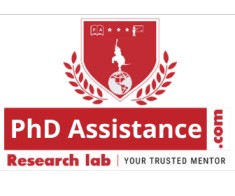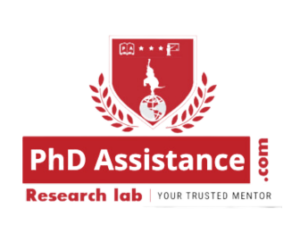Tech Integration in Peer Review: Advancements in the IT evaluating process, discover more insights!
This is an exciting journey into the world of IT evaluation where innovation and customs collide! The peer review process which is essential to upholding the integrity and caliber of new releases is being transformed by the use of cutting edge technology. Lets explore more about how these developments are improving the accuracy efficiency and transparency of IT assessments in addition to changing the world we know today. Prepare to see how technology can completely transform the way peer reviews are conducted.
The Old Meets the New: Evolvement of Peer Review
Peer review has historically been a manual process that heavily depends on the knowledge and attention to detail of expert reviewers in the related field. Despite the fact that this approach has proven effective over time it also has some flaws such as the possibility of biases, time limitations and unstable consequences. (Bhat, 2023) Technology is a game-changer that guarantees it to directly handle these matters.
The Role of AI and Machine Learning
Artificial intelligence (AI) and machine learning (ML) are leading this revolution. Think about AI systems designed to conduct initial evaluations of IT projects sorting through massive amounts of data to identify potential issues or areas for improvement. These systems are not only capable of continuous operation but they can also produce prompt and accurate preliminary assessments.

Interactive Spotlight: AI in Action
– Automated Code Reviews: Tools like GitHub’s Copilot can now assist in reviewing code, suggesting improvements and even identifying potential security vulnerabilities.
– Bias Detection: AI algorithms can be trained to detect and mitigate bias in the review process, ensuring a fair evaluation for all submissions.
Blockchain for Enhanced Transparency and Security
An effective way to improve the peer review process integrity and transparency is through the use of block chain technology. Block chain makes every evaluation tamper-proof and recorded by generating an unchangeable record of all peer review activities.
Real-time Example: Imagine a blockchain-based platform where all participants can view verify and log each stage of the review process. This could increase trust among all parties involved and significantly lower the likelihood of unethical behavior.

Virtual Reality (VR) and Augmented Reality (AR): The New Frontiers
Critics nowadays can interact with complex data visualizations and simulations in a virtual environment thanks to virtual reality (VR) and augmented reality (AR). This adds a new level of complication to peer review. (Akcil et al., 2021) In domains like network security and software engineering, this has the ability to be extremely revolutionary.
Dive In: Interactive Visualization
– Experience a Simulation: Try imagining donning a VR headset to test and interact with a digital twin of a network setup undergoing review. It’s not just reading about possible trouble; it’s experiencing them in a controlled, virtual space scenario.
The Power of Collaboration Tools
Critics all over the world can now collaborate simultaneously at ones like never before, all thanks to improved collaboration tools. To produce more solid IT solutions, these tools aid in fostering a more cohesive review process and guarantee that various viewpoints are considered.
Collaboration in Action:
– Real-time Editing and Feedback: Platforms like Google Docs and Microsoft Teams allow reviewers to provide real-time feedback, discuss discrepancies, and reach a consensus without the need for back-and-forth emails. ( Mgambi Msafiri et al)
Engage with Us, your thoughts matter! Interactive Element: Poll and Discussion
Poll: What do you think is the most impactful technological advancement in peer review?
- Automated Code Review Tools
- Collaboration Platforms
- AI-Powered Insights
- VR/AR Technologies
- Blockchain Integration
Feel free to vote and discuss your choice in the comments section below. We’d love to hear your experiences or predictions on how these technologies are shaping or could shape the future of IT peer reviews.
Conclusions:
Technology integration in IT peer review processes involves more than just implementing new tools—it also entails reconsidering how the tech community’s standards are assessed and maintained. A more streamlined open and unbiased assessment process is what these technologies promise to be as we continue to adopt them. . Recall that the objective is to enhance human judgment rather than replace it with technological tools. Thus let us persist in investigating modifying and creating guaranteeing that the peer review procedure is equally resilient and progressive as the technologies it seeks to assess.
We appreciate that you are coming along with us on this fascinating journey into the future of peer review in the field of IT. The future of technology evaluation is shaped by your participation and insights in this discussion.
Stay curious and connected, and let’s pave the way for a smarter, more inclusive tech world together!
Reference:
- Akcil, U., Uzunboylu, H., & Kinik, E. (2021). Integration of Technology to Learning-Teaching Processes and Google Workspace Tools: A Literature Review. Sustainability, 13(9), 5018. ( (Akcil et al., 2021) )
- Bhat, R. A. (2023). THE IMPACT OF TECHNOLOGY INTEGRATION ON STUDENT LEARNING OUTCOMES: A COMPARATIVE STUDY [Review of THE IMPACT OF TECHNOLOGY INTEGRATION ON STUDENT LEARNING OUTCOMES: A COMPARATIVE STUDY]. Researchgate; International Journal of Social Science, Educational, Economics, Agriculture Research, and Technology (IJSET).
- Franklin, C., & Bolick, C. (2007). Technology Integration: A Review of the Literature. (In-text citation: (Franklin & Bolick, 2007))
- Mgambi Msafiri, et al. “A Systematic Literature Review of ICT Integration in Secondary Education: What Works, What Does Not, and What Next?” Discover Education, vol. 2, no. 1, 16 Nov. 2023.
- Tech Integration in Peer Review: Advancements in the IT evaluating process, discover more insights!



